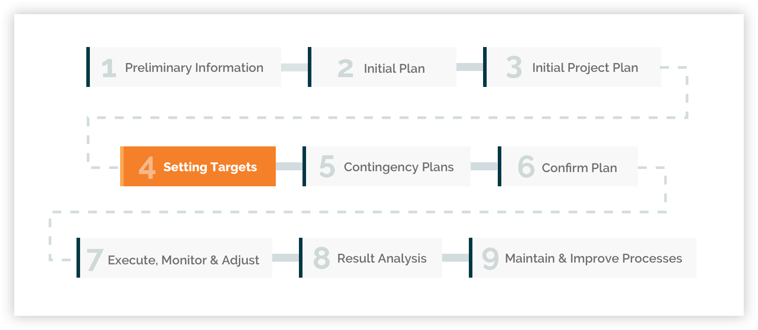This is the 4th part of" 9 Steps to Successful Plant Relocation". If you'd like to view other posts in the series, the links are available on the right side menu of this post (desktop) or at the end (mobile).
When you’ve completed the initial plan, and reached this stage of the project, you and your company should have a strong understanding of what level of production level you’ll need, how the building will be set up, and staffing requirements.
The next step in the process is to agree on your targets with all your service providers. Like any complex project, you will need to discuss and agree on the targets in the following areas:
- Cost - investment amount, recurring cost commitments
- Timelines - production launch and ramp-up
- Scope - responsibilities
In this blog, we will highlight what you need to pay attention to when setting your targets for each item.
Setting Cost Targets

Companies often underestimate the costs needed to build and launch production at a new factory, especially when entering a new market. Those with a modest understanding of the costs will be left confounded at the actual costs if thorough primary research is not completed beforehand.
The costs involved in factory relocation can be divided into two basic types: investment and recurring cost commitments.
Investment costs
Investment is the money you put towards building or remodelling your facility, purchase and set up of equipment, training, and initial raw materials. These costs are relatively easy to estimate and are often made with the assistance of local building contractors and equipment suppliers. These two entities can be a valuable asset in understanding costs.
Recurring cost commitments
Recurring costs commitments can be more complicated but understanding them is the key to continued profitability. Knowing your production goals, estimated labour, utility, and material costs are essential to future planning. Equipment maintenance and replacement costs are also an important consideration. Too few companies take proper maintenance into account and failing to do so can significantly impact cost and productivity.
Total expected costs
Once you’ve determined your investment and recurring costs, add at least 25% to each of them, and you’ll have your original estimate. While the target cost should be the original estimate, new factory development rarely finishes without a few setbacks and additional unforeseen costs. It is important to expect the variation but constantly push to keep costs close to the original estimate.
Establishing Your Timelines
Rome was not built in a day and a new factory is not likely to be ready for production in a month.
While you can set aggressive timelines, they need to remain realistic. Large complex factories can take over one year to build and begin production; even small factories take months before production can begin.
We recommend you set the timeline up in phases and use the modular approach to launch production. Using this method allows your company to get to the minimum viable product quicker so production can get started even though the construction and installation are not 100% complete.
The phases can also act as a good accountability tool both within your company and for your supporting suppliers. Timelines should be reassessed at the end of each phase to see if you and your service providers are on the right track or will need to make other changes as needed.
Determining Your Scope
From the very beginning, it is critical to have a clear understanding of the responsibilities of each party involved. We often see difficulties and delays arising if responsibility is unclear. For example, it must be clear what role the equipment supplier will take for installation of the equipment. Will the supplier install the equipment, will you do it in-house? Or will your building contractor do it? By laying out these responsibilities you can ensure that the project can remain on time.
Each stakeholder in this project must not only understand their own budget, timeline, and scope responsibility but, at least at the basic level, that of the other stakeholders. This ensures that each team member is responsive and focused on the tasks at hand.
Once your targets for cost, timeline and scope are set, you can start creating an effective contingency plan – which we will discuss in the next part of our series.
CMC is committed to providing you with the latest quality content and insights, download our FREE guide to plant relocation now.




